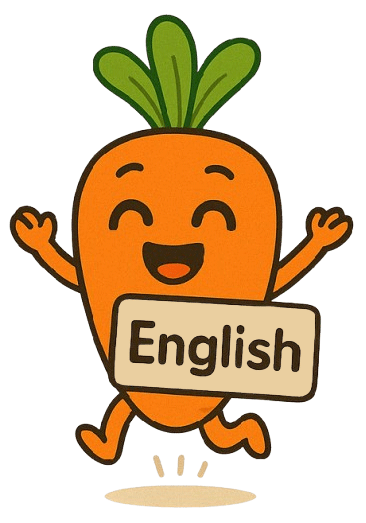당근영어 - 그랜드마스터(Grandmaster) 문제 #025
문제 설명
글로벌화 시대의 문학 연구 방법론으로서 비교문학과 세계문학 개념을 탐구합니다. 국민문학의 경계를 넘어 다양한 문화권의 문학적 교류와 영향 관계, 번역과 수용의 역학, 그리고 세계 체제 속에서 문학의 생산과 유통을 분석하는 이론적 틀과 실제 사례를 학습합니다.
학습 목표
- 비교문학과 세계문학의 주요 이론과 방법론 이해하기
- 문학 연구에서 번역의 의미와 문제점 분석하기
- 세계문학 체계 내에서의 중심부/주변부 역학 이해하기
- 특정 문학 작품의 초국가적 순환과 변형 과정 추적하기
제약 사항
- 서구 중심적 관점을 넘어 다양한 지역의 문학 전통을 고려해야 합니다.
- 문학 텍스트 자체뿐 아니라 그 생산, 유통, 수용의 사회경제적 맥락을 함께 분석해야 합니다.
- 언어와 문화 간 번역 과정에서 발생하는 의미 변형과 권력 관계를 인식해야 합니다.
- 지역적 특수성과 세계적 보편성 사이의 변증법적 관계를 균형 있게 다루어야 합니다.
컨텍스트
당신은 비교문학 연구자로서, 국가와 언어의 경계를 넘어 문학 작품들 간의 관계와 영향을 연구하고 있습니다. 글로벌화와 디지털 기술의 발전으로 문학의 생산과 유통이 빠르게 변화하는 가운데, '세계문학'이라는 개념이 어떻게 재구성되고 있는지, 그리고 다양한 지역의 문학이 글로벌 문학 시장에서 어떻게 위치하고 있는지를 비판적으로 탐구합니다.
"세계문학은 더 이상 국민문학들의 단순한 집합이 아니다. 그것은 불평등한 교환의 세계 시스템 속에서 작동하는 문학적 공간이며, 그 안에서 중심과 주변의 역학은 지속적으로 협상되고 재구성된다."
문제
문제 1: 괴테의 세계문학 개념
다음은 괴테(Johann Wolfgang von Goethe)가 1827년에 언급한 '세계문학(Weltliteratur)' 개념에 관한 구절입니다:
"National literature is now a rather unmeaning term; the epoch of world literature is at hand, and everyone must strive to hasten its approach. But, while we thus value what is foreign, we must not bind ourselves to anything in particular, and regard it as a model. We must not give this value to the Chinese, or the Serbian, or Calderon, or the Nibelungen; but if we really want a pattern, we must always return to the ancient Greeks, in whose works the beauty of mankind is constantly represented."
괴테의 세계문학 개념에 대한 가장 적절한 해석은 무엇입니까?
문제 2: 프랑코 모레티의 '원거리 읽기'
다음은 프랑코 모레티(Franco Moretti)의 『세계 텍스트의 추측(Conjectures on World Literature)』에서 발췌한 내용입니다:
"The study of world literature is inevitably a study of the struggle for symbolic hegemony across the world. [...] The one-and-unequal literary system of the world will not be altered by our decisions to read this or that text. What we must do instead is recognize the disproportionate influence of a few literary centers and use it as a working hypothesis to investigate the laws of international literary evolution."
모레티의 세계문학 연구 방법론에 대한 가장 적절한 설명은?
문제 3: 번역과 세계문학
다음은 데이비드 담로쉬(David Damrosch)의 『세계문학이란 무엇인가(What Is World Literature?)』에서 발췌한 내용입니다:
"World literature is writing that gains in translation, unlike national or local literatures that are often deeply bound to their language and locality. [...] Works become world literature by being received into the space of a foreign culture, a space defined in many ways by the host culture's national tradition and the present needs of its own writers. World literature is thus always as much about the host culture's values and needs as it is about the source culture's values and needs."
담로쉬의 세계문학 개념과 번역의 역할에 대한 가장 적절한 해석은?
핵심 개념
문체론
문학 작품의 언어적 특성과 표현 방식을 체계적으로 분석하는 학문
형식주의
문학의 내용보다 형식적 요소와 기법에 주목하는 비평 이론
시적 기능
언어의 메시지 자체에 초점을 맞추는 기능으로, 문학 텍스트의 핵심 특성
문체적 효과
특정 언어 표현이 독자에게 미치는 심리적, 미학적 영향
주요 학습 자료
핵심 이론서
- Roman Jakobson, Linguistics and Poetics (1960)
- Geoffrey Leech & Mick Short, Style in Fiction (1981)
- Katie Wales, A Dictionary of Stylistics (2001)
- Michael Toolan, Language in Literature (1998)
- Peter Stockwell, Cognitive Poetics (2002)
주요 분석 방법론
- 통계적 문체론 (Statistical Stylistics)
- 화용론적 문체 분석 (Pragmatic Stylistic Analysis)
- 인지 문체론 (Cognitive Stylistics)
- 말뭉치 문체론 (Corpus Stylistics)
- 다양성 분석 (Variation Analysis)
학습 힌트
힌트 1
문학의 세계화는 글로벌화와 디지털 기술의 발전으로 일어나고 있습니다. 이를 이해하기 위해서는 문학의 생산과 유통의 사회경제적 맥락을 고려해야 합니다.
힌트 2
세계문학은 국가와 언어의 경계를 넘어 순환하고 영향을 미치는 문학입니다. 이를 이해하기 위해서는 번역과 수용의 역학을 분석해야 합니다.
힌트 3
세계문학의 이해를 돕기 위해서는 문학의 중심부와 주변부의 역학을 이해해야 합니다. 이는 중심부와 주변부의 불균등한 관계로 구성된 세계적 문학 생산 및 유통 구조를 이해하는 것을 의미합니다.
 당근영어
당근영어